Energy 93 kJ (22 kcal) Fat 0.3 g Vitamin A equiv. (0%)0 μg | Carbohydrates 3.3 g Protein 3.1 g Thiamine (B1) (7%)0.08 mg | |
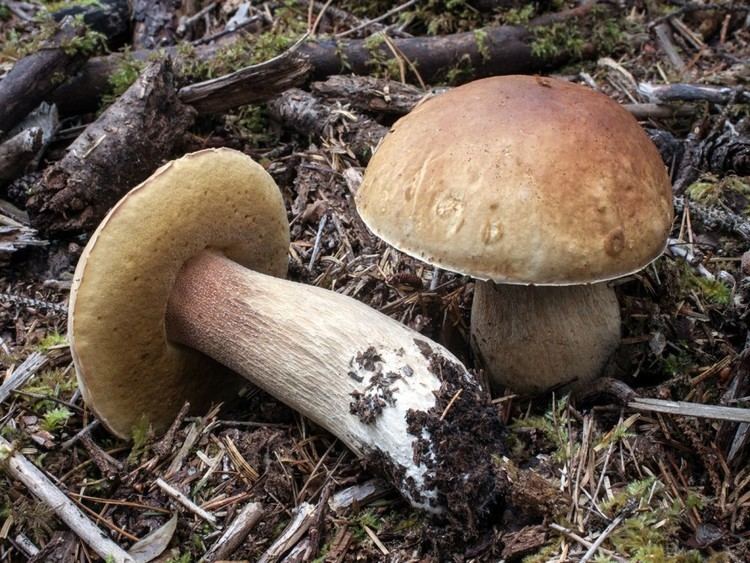 | ||
Similar Mushroom, Shiitake, Chanterelle, Water, True ls | ||
40 most common fall edible mushrooms including a few poisonous ones at the end
Edible mushrooms are the fleshy and edible fruit bodies of several species of macrofungi (fungi which bear fruiting structures that are large enough to be seen with the naked eye). They can appear either below ground (hypogeous) or above ground (epigeous) where they may be picked by hand. Edibility may be defined by criteria that include absence of poisonous effects on humans and desirable taste and aroma.
Contents
- 40 most common fall edible mushrooms including a few poisonous ones at the end
- Top 10 edible mushrooms
- History of mushroom use
- Commercially cultivated
- Commercially harvested wild edibles
- Other edible wild species
- Conditionally edible species
- Nutrients
- Vitamin D
- Use in traditional medicine
- Preparing edible mushrooms
- References
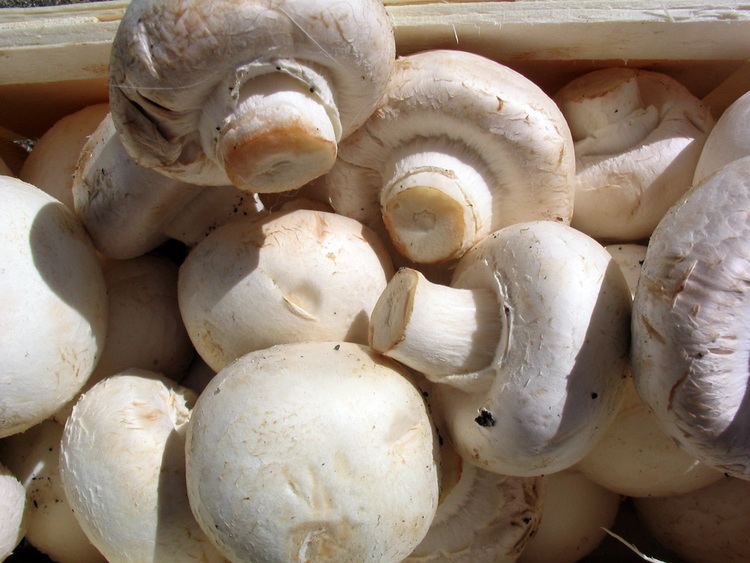
Edible mushrooms are consumed for their nutritional value and they are occasionally consumed for their supposed medicinal value. Mushrooms consumed by those practicing folk medicine are known as medicinal mushrooms. While hallucinogenic mushrooms (e.g. psilocybin mushrooms) are occasionally consumed for recreational or religious purposes, they can produce severe nausea and disorientation, and are therefore not commonly considered edible mushrooms.
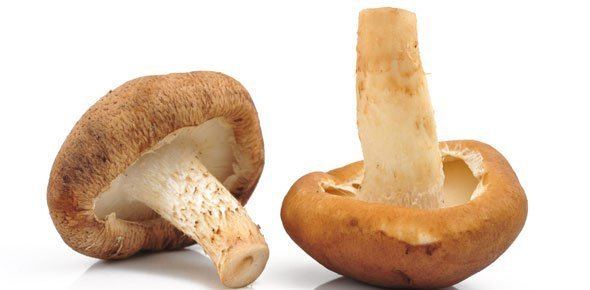
Edible mushrooms include many fungal species that are either harvested wild or cultivated. Easily cultivatable and common wild mushrooms are often available in markets, and those that are more difficult to obtain (such as the prized truffle and matsutake) may be collected on a smaller scale by private gatherers. Some preparations may render certain poisonous mushrooms fit for consumption.
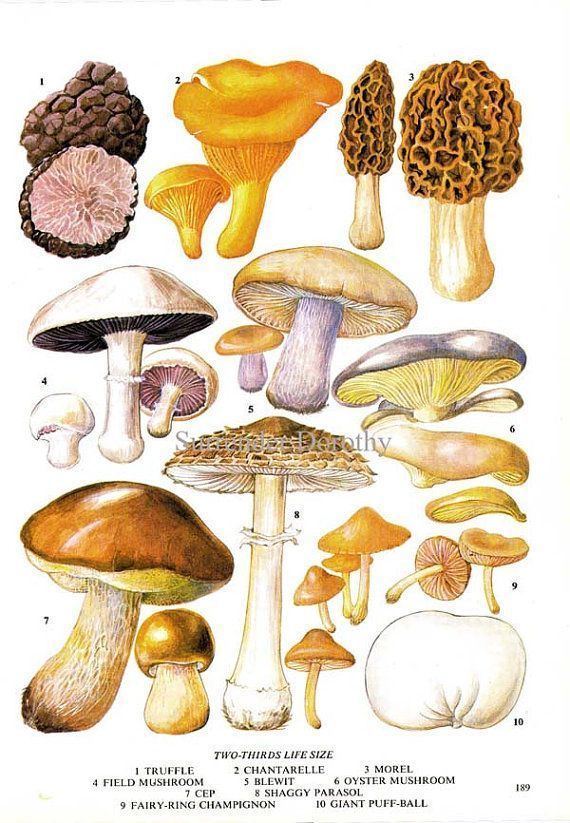
Before assuming that any wild mushroom is edible, it should be identified. Accurate determination and proper identification of a species is the only safe way to ensure edibility, and the only safeguard against possible accident. Some mushrooms that are edible for most people can cause allergic reactions in some individuals, and old or improperly stored specimens can cause food poisoning. Great care should therefore be taken when eating any fungus for the first time, and only small quantities should be consumed in case of individual allergies. Deadly poisonous mushrooms that are frequently confused with edible mushrooms and responsible for many fatal poisonings include several species of the Amanita genus, in particular, Amanita phalloides, the death cap. It is therefore better to eat only a few, easily recognizable species, than to experiment indiscriminately. Moreover, even species of mushrooms that normally are edible, may be dangerous, as mushrooms growing in polluted locations can accumulate pollutants such as heavy metals.

Top 10 edible mushrooms
History of mushroom use
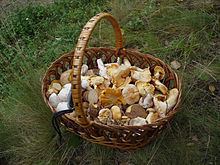
Mycophagy /maɪˈkɒfədʒi/, the act of consuming mushrooms, dates back to ancient times. Edible mushroom species have been found in association with 13,000-year-old archaeological sites in Chile, but the first reliable evidence of mushroom consumption dates to several hundred years BC in China. The Chinese value mushrooms for medicinal properties as well as for food. Ancient Romans and Greeks, particularly the upper classes, used mushrooms for culinary purposes. Food tasters were employed by Roman emperors to ensure that mushrooms were safe to eat.
Mushrooms are also easily preserved, and historically have provided additional nutrition over winter.
Many cultures around the world have either used or continue to use psilocybin mushrooms for spiritual purposes as well as medicinal mushrooms in folk medicine, although these are not considered "edible" mushrooms in the culinary sense.
Commercially cultivated
Mushroom cultivation has a long history, with over twenty species commercially cultivated. Mushrooms are cultivated in at least 60 countries with China, the United States, Netherlands, France and Poland being the top five producers in 2000.
A fraction of the many fungi consumed by humans are currently cultivated and sold commercially. Commercial cultivation is important ecologically, as there have been concerns of depletion of larger fungi such as chanterelles in Europe, possibly because the group has grown popular, yet remains a challenge to cultivate.
Commercially harvested wild edibles
Some species are difficult to cultivate; others (particularly mycorrhizal species) have not yet been successfully cultivated. Some of these species are harvested from the wild, and can be found in markets. When in season they can be purchased fresh, and many species are sold dried as well. The following species are commonly harvested from the wild:
Other edible wild species
Many wild species are consumed around the world. The species which can be identified "in the field" (without use of special chemistry or a microscope) and therefore safely eaten vary widely from country to country, even from region to region. This list is a sampling of lesser-known species that reported as edible.
Conditionally-edible species
There are a number of fungi that are considered choice by some and toxic by others. In some cases, proper preparation can remove some or all of the toxins.
Nutrients
A commonly eaten mushroom is the white mushroom (Agaricus bisporus). In 100 grams, these provide 22 calories and are composed of 92% water, 3% carbohydrates, 3% protein and 0.3% fat (table). They contain high levels (20% or more of the Daily Value, DV) of riboflavin, niacin, and pantothenic acid (24–33% DV), with lower moderate content of phosphorus (table). Otherwise, raw white mushrooms generally have low amounts of essential nutrients (table).
Although cooking (by boiling) lowers mushroom water content only 1%, the contents per 100 grams for several nutrients increase appreciably, especially for dietary minerals (table for boiled mushrooms).
The content of vitamin D is absent or low unless mushrooms are exposed to sunlight or purposely treated with artificial ultraviolet light (see below).
Vitamin D
Mushrooms exposed to ultraviolet (UV) light produce vitamin D2 before or after harvest by converting ergosterol, a chemical found in large concentrations in mushrooms, to vitamin D2. This is similar to the reaction in humans, where vitamin D3 is synthesized after exposure to sunlight.
Testing showed an hour of UV light exposure before harvesting made a serving of mushrooms contain twice the U.S. Food and Drug Administration's daily recommendation of vitamin D, and 5 minutes of UV light exposure after harvesting made a serving of mushrooms contain four times the FDA's daily recommendation of vitamin D. Analysis also demonstrated that natural sunlight produced vitamin D2.
The ergocalciferol, vitamin D2, in UV-irradiated mushrooms is not the same form of vitamin D as is produced by UV-irradiation of human skin or animal skin, fur, or feathers (cholecalciferol, vitamin D3). Although vitamin D2 clearly has vitamin D activity in humans and is widely used in food fortification and in nutritional supplements, vitamin D3 is often used in dairy and cereal products.
Use in traditional medicine
Medicinal mushrooms are mushrooms or extracts from mushrooms that are thought to be treatments for diseases, yet remain unconfirmed in mainstream science and medicine, and so are not approved as drugs or medical treatments. Such use of mushrooms therefore falls into the domain of traditional medicine.
Preliminary research on mushroom extracts has been conducted to determine if anti-disease properties exist, such as for polysaccharide-K, polysaccharide peptide, or lentinan. Some extracts have widespread use in Japan, Korea and China, as potential adjuvants to radiation treatments and chemotherapy.
The concept of a medicinal mushroom has a history spanning millennia in parts of Asia, mainly as traditional Chinese medicine.
Preparing edible mushrooms
Some wild species are toxic, or at least indigestible, when raw. As a rule all mushroom species should be cooked thoroughly before eating. Many species can be dried and rehydrated by pouring boiling water over the dried mushrooms and letting them steep for approximately 30 minutes. The soaking liquid can be used for cooking as well, provided that any dirt at the bottom of the container is discarded.
Cell walls of mushrooms contain chitin, which is not easily digestible by humans. Cooking will help break down the chitin making cell contents. High speed blending can have a similar effect, but will not degrade mild toxins and carcinogens which are present in some edible species.
Failure to identify poisonous mushrooms and confusing them with edible ones has resulted in death.
